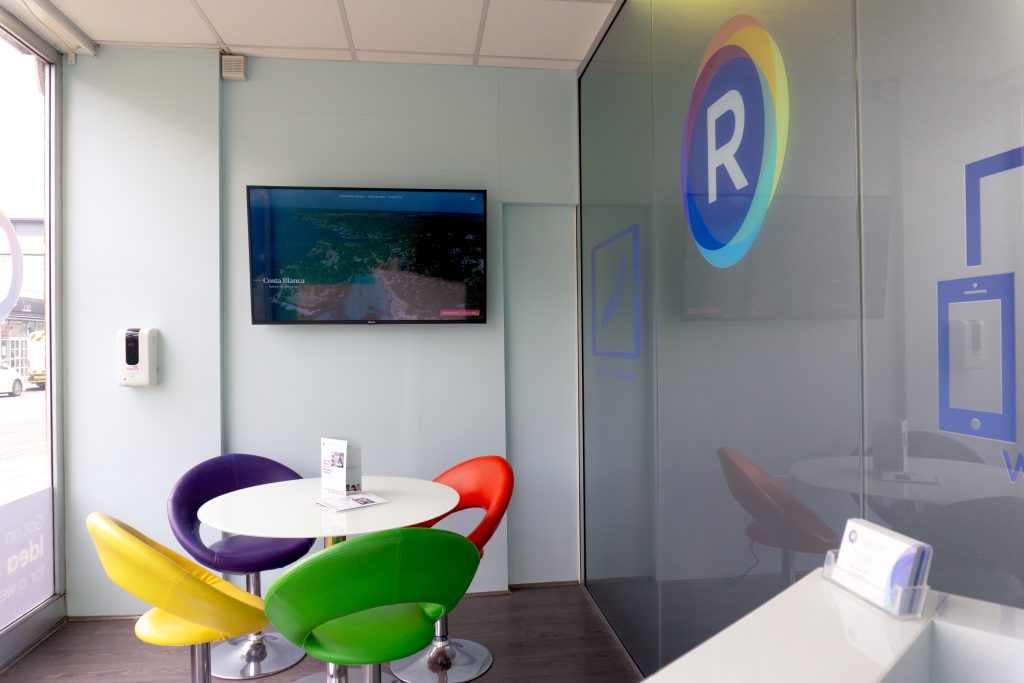
Have you ever wondered why certain brands instantly catch your eye? The secret lies in the power of colour branding. This strategic approach to marketing harnesses colour psychology to create a lasting impact on consumers. By understanding how different hues affect human emotions and behaviour, businesses can craft a brand identity that resonates with their target audience and boosts brand awareness.
Colour theory plays a crucial role in shaping consumer behaviour and brand personality. This article delves into the science behind colour psychology and its application in marketing strategies. We’ll explore the psychological impact of primary colours, discuss effective colour combinations for branding, and provide insights on implementing these principles in your marketing efforts. By mastering colour branding, you’ll be equipped to create a strong, memorable brand that stands out in today’s competitive marketplace.
The Science Behind Colour Psychology
Colour psychology, the study of how colours affect human behaviour and emotions, plays a crucial role in marketing and branding. It examines how people perceive and interpret different hues, influencing their emotional, behavioural, and psychological responses. This science has a significant impact on consumer decisions, with research showing that colour can influence up to 85% of customers’ purchasing choices.
The colour wheel, a fundamental tool in colour theory, consists of primary, secondary, and tertiary colours. Understanding these relationships helps create visually balanced designs. Additionally, colour systems like HSV, RGB, and HEX enable precise colour specification across various media platforms.
It’s important to note that colour associations can vary based on cultural influences, personal experiences, and industry contexts. For instance, while red may evoke excitement in Western countries, it symbolises luck and happiness in China. These cultural nuances highlight the importance of considering target audience demographics when developing a colour branding strategy.
Primary Colours and Their Psychological Impact
Primary colours play a crucial role in colour psychology, significantly influencing consumer behaviour and brand perception. Red, blue, and yellow each have unique psychological impacts that marketers can leverage to create powerful brand identities.
Red, a warm and energetic colour, has a strong influence on human emotions and behaviour. It can evoke feelings of excitement, power, and passion. In marketing, red is often used to create a sense of urgency, with call-to-action buttons frequently utilising this colour to encourage conversions. Interestingly, red can also have a physical impact, stimulating appetite, which explains its prevalence in the food industry.
Blue, the world’s favourite colour, is associated with trust, dependability, and wisdom. It’s the most popular logo colour, with 33% of top brands featuring it in their branding. Social media companies often choose blue to appear reliable, a crucial trait for businesses handling user data.
Yellow represents optimism, creativity, and warmth. It’s the colour of happiness and youthfulness, often used by brands to tap into feelings of joy and energy. Yellow’s high visibility makes it excellent for drawing attention to important information.
Colour Combinations for Effective Branding
Effective colour branding relies on strategic combinations that evoke desired emotions and create visual harmony. Common colour schemes include monochromatic, analogous, complementary, and triadic. Monochromatic schemes use variations of a single colour, emphasising one dominant brand trait. Analogous colours, adjacent on the colour wheel, offer a safe yet cohesive look. Complementary colours, opposites on the wheel, create dynamic visuals. Triadic schemes, using three equidistant colours, provide stimulating variety.
These combinations help brands convey specific emotions, amplify style, and enhance aesthetic appeal. When selecting a colour palette, consider the industry, target audience, and brand personality to create a memorable and impactful brand identity.
Implementing Colour Psychology in Your Marketing Strategy
To effectively implement colour psychology in marketing, brands must focus on consistency and strategic colour selection. Research shows that colour can influence up to 85% of customers’ purchasing decisions. To harness this power, companies should develop a comprehensive brand style guide that outlines visual and verbal guidelines. This guide should include specific colour codes, usage rules, and applications across various marketing channels.
When selecting brand colours, consider the target audience, product usage context, and cultural implications. Choose a base colour that reflects the brand’s dominant personality trait, an accent colour that complements it, and a neutral colour for backgrounds. Consistent use of these colours across all touchpoints, including websites, social media, and physical materials, strengthens brand recognition and awareness.
Conclusion
The strategic use of colour in branding has a profound impact on consumer perception and behaviour. By tapping into the psychological effects of different hues and their combinations, businesses can create a strong visual identity that resonates with their target audience. This approach not only boosts brand recognition but also helps to convey a company’s values and personality without saying a word.
As we’ve seen, the science of colour psychology offers valuable insights to enhance marketing efforts. To make the most of this knowledge, it’s crucial to consider cultural contexts, industry norms, and audience preferences when choosing a colour palette. By consistently applying these principles across all marketing channels, brands can build a cohesive and memorable identity that stands out in today’s crowded marketplace. Remember, the right colours can speak volumes about your brand, making it an essential tool in your marketing arsenal.
FAQs
Which colour is considered the most effective in marketing?
Red is considered one of the most effective colours in marketing due to its boldness and ability to grab attention quickly. It is associated with power, energy, excitement, passion, and urgency, making it a popular choice in fast-food branding and sales promotions to create a sense of immediacy.
What should brand designers know about colour psychology?
Brand designers should consider these five tips when using colour psychology:
- Select a colour that genuinely represents your brand.
- Choose a colour that reflects your brand’s personality.
- Opt for a colour that resonates well with your target audience.
- Pick a colour that makes your brand stand out from competitors.
- Apply your brand colours consistently across all marketing channels.